DeLuca Virtual Symposium
“Applying fundamental knowledge into applied sciences”
June 15, 2023
Session 1: Sports Science (6:00pm AEST/10:00am CEST)
Session 2: Neurorehabilitation (4:00pm CEST/10:00am EDT)
The ISEK Early Career Researcher Committee is pleased to announce the first edition of the DeLuca Symposium, a virtual event highlighting research from senior and early-/mid-career scientists on topics of interest to trainees, from undergraduate students to early-career researchers.
The Symposium’s topic is “Applying fundamental knowledge into applied sciences”. In particular, the virtual event will be divided into two 90-minute sessions focusing on sports sciences and neurorehabilitation, respectively. Each session will feature 3 speakers delivering a 20-minute presentation each, followed by a 30-minute Q&A period at the end.
Attendees will hear from six recognized experts in the fields of electrophysiology and kinesiology who will share their research, innovative technologies, and practical experiences in a series of keynote speeches. The speakers will provide examples of how it is possible to apply fundamental knowledge in electrophysiology and kinesiology to applied sciences. At the end of the symposium, attendees will also have the opportunity to engage in discussion with the speakers and other researchers who share a common interest in these topics.
The DeLuca Symposium is lead by the 2022 Carlo J. DeLuca Award winners, Manuela Besomi, Marco Ghislieri and Bryan Schlink with support from the ECR Committee.
Registration is FREE but attendees must register to participate.
Session 1: Sports Science
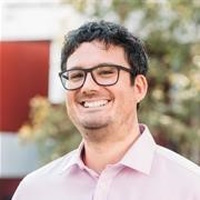
Claudio Pizzolato
Griffith University
Title: The Digital Athlete Australia: vision, development, and applications
Abstract: Mechanics is a fundamental driver of musculoskeletal adaptation, affecting material properties and morphology of tissues. Inappropriate mechanical loading is associated to maladaptation and consequent initiation and progression of numerous musculoskeletal conditions. Conversely, appropriate loading leads to improved tissue mechanical properties, and it is a desirable target to guide efficacious and personalized rehabilitation interventions and injury prevention. However, it is currently unfeasible or even impossible to directly measure some of these biomechanical quantities, preventing clinical intervention to target established mechanisms of tissue adaptation or prevent injury. Recent studies from our research group demonstrated the ability of our computational models to predict physiologically plausible mechanics of selected musculoskeletal tissues. The next challenge is enabling this same level of precision outside the research laboratory.
The Digital Athlete Australia is a computational approach combining medical imaging, electromyography, modelling of the neuromusculoskeletal system, artificial intelligence, and field-based measures to enable monitoring of tissue states (i.e., stress and strain) during activities of daily living, rehabilitation, and sport. Salient aspects of The Digital Athlete Australia development and validation will be presented, alongside current and future research directions and opportunities to apply this technology to sport performance and rehabilitation.
Speaker Biography
Dr Claudio Pizzolato is a research lead within the Griffith Centre of Biomedical and Rehabilitation Engineering and a senior lecturer in the School of Health Sciences and Social Work, Griffith University, Gold Coast, Australia. Claudio’s research program focuses on the development of computational models of neuromusculoskeletal systems and artificial intelligence methods and their application to spinal cord injury rehabilitation, injury prevention, and athletic performance. Claudio currently leads the BioSpine research program on neural recovery after spinal cord injury and The Digital Athlete Australia.
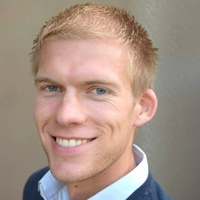
Bas Van Hooren
Maastricht University
Title: Muscle forces and fascicle behavior during three popular hamstring exercises
Abstract: Knowledge about muscular forces and fascicle behavior during hamstring exercises can optimize exercise prescription, but information on these outcomes across different exercises is lacking. This talk will present the lower-limb muscle forces and biceps femoris long head muscle fascicle behavior during three hamstring exercises: the Nordic hamstring curl (NHC), single-leg Roman chair (RCH), and single-leg deadlift (DL). The implications of these findings for exercise prescription will also be discussed.
Speaker Biography
Bas Van Hooren is a sport science consultant, strength and conditioning specialist and athlete. He started his PhD on injury prevention and performance enhancement in running-based sports in 2017 at Maastricht university. Bas has been involved as a sport science consultant for various professional organizations and has been active as an assistant strength and conditioning coach at the Dutch Olympic committee. As an athlete he has won several medals at the Dutch national championships, and he became Dutch National champion in 2017. Bas combines his theoretical knowledge as a sport scientist/researcher with practical experiences from being an athlete and coach to translate complex theoretical concepts into useful and evidence-based practical applications. He has published over 30 journal articles on topics ranging from biomechanics to exercise physiology and has given multiple workshops on sport science related topics for a variety of audiences throughout Europe.
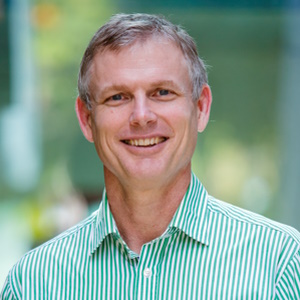
Sean Tweedy
University of Queensland
Title: Parasport classification – strengths, weaknesses and a way forward
Abstract: Established in 1948, the Paralympic Movement, is a long-standing, internationally significant sports movement. Currently more than 80% of the world’s nations (164/204) compete in international para sport events and the Paralympic games is the third largest sporting event in the world. Parasport classification systems play an indispensable role in the movement. Sean Tweedy is an international authority on Para sport classification: he was an International classifier from 1993-2012, classified at four Paralympic games, has been a member of the International Paralympic committee’s Classification Compliance and Oversight Committee since 2008 and is on the World ParaAthletics Classification Advisory Group. He is also the Principal Investigator for the IPC Classification Research and Development Centre (Physical Impairment). In this presentation he will outline the indispensable role that classification plays in Para sport, the strengths of current methods of classification, some of the key weaknesses and how these might be addressed through the application of scientific principles and tailored application of current technologies.
Speaker Biography
Sean Tweedy leads the Para Sport and Adapted Physical Activity Research area in the School of Human Movement and Nutrition Sciences, University of Queensland. His main research focus in Para sport is the development of evidence-based methods of classification. He is first author on the paper IPC Position Stand – Background and Scientific Principles of Classification in Paralympic Sport and he is Principal Investigator for the International Paralympic Committee (IPC) Classification Research Centre (Physical Impairments), established in 2013. Outputs have included evidence-based methods for estimating Maximum Allowable Standing Height for runners with bilateral lower limb amputations and the development of sport specific Minimum Impairment Criteria for World Para-Athletics. He leads the ParaSTART project, a longitudinal program of research which engages people with high support needs and cerebral palsy in competitive, performance-focussed sports training and monitors their physical and psychosocial responses – a brief (4min) vignette is available here (https://youtu.be/HxCRf7hHj7k). He recently helped secure an historically large Queensland Government contribution to establish a Paralympic Centre of Excellence – a legacy project for the 2032 Paralympic Games (https://statements.qld.gov.au/statements/97431).
Session 2: Neurorehabilitation

Massimo Sartori
University of Twente
Title: Shifting the paradigm: modelling the human for enhancing the robot.
Abstract: Neuromuscular injuries leave millions of people disabled worldwide every year. Robotics has the potential to restore a person’s movement capacity following injury. However, the impact of current technologies is hampered by the limited understanding of how robots interact the human neuromuscular system. That is, current movement-support robots such as exoskeletons interact with the human body with no feedback of how biological targets (e.g., tendons, muscles, neurons) react and adapt to robot-induced mechanical or electrical stimuli over time. This talk will outline current work conducted in my Lab to create a new framework for ‘closing-the-loop’ between wearable technology and human biology. Our approach involves combining bio-electrical recordings, numerical modeling, and real-time closed-loop control to investigate the response of the human neuro-muscular system over time to robotic interventions in vivo. This paradigm has the potential to revolutionize the development of effective and safe movement-support technologies for individuals with neuromuscular injuries.
Speaker Biography
Massimo Sartori is Professor and Chair of Neuromechanical Engineering at the University of Twente (Faculty of Engineering Technology) where he directs the Neuromechanical Modelling & Engineering Lab. His research focuses on understanding how human movement emerges from the interplay between the nervous system and the musculoskeletal system, both in healthy and impaired individuals. His overarching goal is to translate such knowledge towards the development of novel robots that can interact with skeletal muscles in vivo to prevent for injury or to restore motor function following injury and disease. On these topics Prof. Sartori is directing high-gain/high-risk grants (e.g., European Research Council) as well as consortium-based research projects (e.g., H2020-MSCA-ITN, H2020-RIA-ICT). Moreover, he has been translating his research advances into industrial and clinical settings in collaboration with partners ranging from OttoBock HealthCare to MetaAI, from TMSi to Sint Maartenskliniek. Prof. Sartori obtained his PhD in Information Engineering (2011) from the University of Padova (Italy) and was Visiting Scholar at the University of Western Australia (WA, Australia), Griffith University (QLD, Australia) and Stanford University (CA, USA). He conducted his main post-doc at the University of Göttingen (Germany) where he become Junior Research Group Leader in 2015. In 2017 he joined the University of Twente (The Netherlands) as a tenure-track scientist. Prof. Sartori currently serves as an Associate Editor at the IEEE Transactions on Neural Systems and Rehabilitation Engineering, IEEE Robotics and Automation Letters as well as at Frontiers in Neurorobotics and Frontiers in Bionics and Biomimetics. He is Co-Chair of the IEEE RAS Technical Committee on BioRobotics and is a member of scientific societies including: the European Society of Biomechanics, the International Society of Biomechanics, the IEEE Robotics and Automation Society, the IEEE Engineering in Medicine and Biology Society, and the IEEE International Consortium on Rehabilitation Robotics.
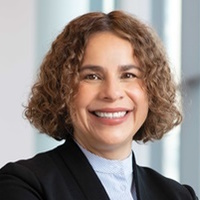
Monica Perez
Shirley Ryan AbilityLab
Title: A Novel Approach to Target Functional Restoration after Spinal Cord Injury
Abstract: Spinal cord injury disconnects corticospinal axons from their motor neuron targets, resulting in devastating paralysis. Throughout life, synapses, including those that transmit spinal motor commands, can be modified by Hebbian plasticity (i.e., “neurons that fire together, wire together”) suggesting that this could be used to rebuild damaged connections. Our laboratory developed a noninvasive Hebbian stimulation protocol that targets multiple upper- and lower-limb muscles in parallel by activating spinal motor neurons a few milliseconds after the arrival of corticospinal action potentials. I will discuss a series of proof of principle studies that showed evidence for spike-timing-dependent plasticity at spinal synapses in humans with and without spinal cord injury, including the pros and cons of this novel noninvasive approach. This discussion will be followed-up by a description of the results of our clinical trials. We found that participants with chronic SCI receiving Hebbian stimulation targeting multiple limb muscles combined with exercise training improved largely than a group receiving sham stimulation in the performance of functional tasks and physiological outcomes. These improvements persisted for several months post-therapy. We propose that Hebbian stimulation represents an effective strategy to promote the recovery of multiple functions following SCI.
Speaker Biography
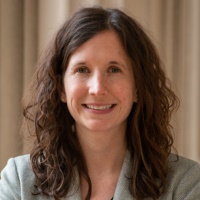
Emily Rogers-Bradley
University of Calgary
Title: Towards the design of lighter, smaller, and smarter prostheses
Abstract: There are nearly 1 million people with major lower limb amputations in the US currently, with a projected increase over the next decades due to increased rates of diabetes and cardiovascular disease. Asymmetry in gait patterns and an increased load on the sound limb can lead to an increase in rates of knee pain, osteoarthritis, back pain, and decreased fitness levels for people with lower limb amputation. Powered prostheses have been developed which provide physiological levels of ankle torque and power, but despite their many potential benefits are inaccessible to many due to the current lack of insurance reimbursement and high cost. These devices are also heavy, large, and noisy during operation. Passive prostheses are much more widely available and lighter than powered systems, but they provide insufficient push-off power and are unable to adapt to changing walking speeds or terrain. A third category of device exists – quasi-passive prostheses are devices that use mechanical energy to change properties of the device but do not do net positive work on the user’s stride. This talk explores the large potential benefit of quasi-passive prostheses, how we can use fundamental engineering principles to develop devices that restore key biomechanical function during walking, and the main challenges in robotic prosthesis development.
Speaker Biography
Dr. Emily Rogers-Bradley is an Assistant Professor at the University of Calgary in the departments of Mechanical and Manufacturing Engineering and Biomedical Engineering. Dr. Rogers-Bradley is the director of the Adaptive Bionics Lab, researching the design of quasi-passive prostheses and exoskeletons that adapt to speed, terrain, and ground surface for walking and running optimization. Her research merges precision machine design, biomechanics, and robotics for the development of new types of prostheses and exoskeletons. Prior to joining the University of Calgary she obtained her PhD in Mechanical Engineering from Massachusetts Institute of Technology in February 2023. She received an MSc in Mechanical Engineering from MIT in 2019 and a BSc in Biomedical Engineering from Harvard University in 2015. She has also spent several years in industry as a Mechatronics Engineer at Ekso Bionics, where she designed robotic exoskeletons for stroke and spinal cord injury rehabilitation. Her work has been featured in the PBS NOVA documentary ‘Augmented’, a permanent exhibit in the Boston Museum of Science, and is a named contributor in a TED Talk.
